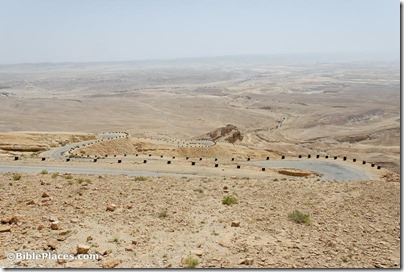Archaeologists have uncovered a Hellenistic farmstead in eastern Galilee that was abandoned in haste. They also found a significant agricultural settlement dating to the time of David and Solomon.
A brief article at The Jerusalem Post notes the discovery of game boards and game pieces from Gath that date to the 3rd millennium BC. The underlying PEQ article is available for purchase.
Moshe Gilead at Haaretz (premium) provides a lengthy explanation for why Ma’aleh Akrabim, “the most beautiful and dangerous road in Israel,” has been closed for five years.
The latest issue of Biblical Archaeology Review includes articles on Mt. Nebo, Merneptah’s destruction of Gezer, and the year 1177 BC. You can get a taste for the Mt. Nebo article and see many of its photos here.
Biblical Archaeology Review assistant editor Nathan Steinmeyer gives an on-site tour of Caesarea (6 min).
Bryan Windle’s top three reports for the month of May include excavations at Tel Timna, a Galilean farmstead, and Herod’s bathtubs.
Ellen Frankel wrote a mystery novel about the Dead Sea Scrolls that begins with the discovery of a key to crack the Copper Scroll.
The Sacred Thread is a forthcoming series that “explores the original context and culture of the Bible through a worldwide journey to uncover its meaning.” Created by Walking The Text and EvolveStudios, the first episode is now online (free to watch with registration).
HT: Agade, Joseph Lauer, Arne Halbakken, Keith Keyser, Explorator
Modern road of Maale Aqrabbim – “the most beautiful and dangerous road in Israel”
